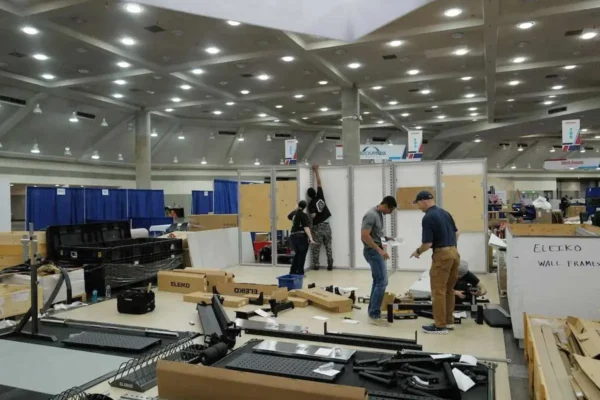Tips for Adapting Your U.S. Exhibiting Strategies to the International Stage
by Larry Kulchawik
The biggest mistake that U.S. companies make when taking their U.S. trade show experiences abroad is assuming that their formula for success in the U.S. will work the same internationally. Exhibiting abroad requires a recalculation of thinking and a different exhibit strategy for both exhibit design and engagement styles. Here are some tips for American exhibitors when taking their brand and message abroad.
Don’t Go It Alone
Find an experienced partner from the region, or one who is familiar with the venue, culture, and the event. Work with them to create an exhibit layout that meets the regulations and expectations. Note that exhibit floor spaces abroad are not necessarily available in tidy 10×10-foot increments like in the U.S. Don’t be surprised by odd shapes and metric measurements. (Discuss inches/centimeters–it will save time and confusion.) Your partner should also be helpful in understanding how the destination and venue handles freight and material handling, labor, other show services, and the required pre-payment and taxes. Show service contractors, as we know them in the U.S., are not the same abroad.
Carefully Consider If Your Exhibit Design Works For This International Region
Do you plan on a raised floor or carpet? A raised floor in Europe is not necessarily used to hide electric cords and create a level floor. It is often viewed by the exhibitor as a stage that invites guests to their “kingdom.” Other design questions that should be asked: Are hanging ID signs permitted? Is the lighting above or within the booth? What are the electrical requirements? Bar area and kitchen? Catering or not? Private seating areas or open? Live presentation or one-on-one discussions? If uncertain, go back to point #1 above.
Tailor your Product or Service Offering to the Needs of the International region in which you’re exhibiting.
Does your product or service have the same demand in this region of the world as it does in the U.S.? What unique value proposition does it offer? Promoting American designer shoes in Italy may be a hard sell.
Be Sensitive To Cultural Differences
As an exhibitor working the stand, learn about local topics to discuss (sports, art, attractions, history), as well as topics to avoid (religion and politics). Your product, services, and exhibit design may be great, but how you engage with an international audience can make or break your chances to attract new buyers. The Culture Map by Erin Meyer is a good primer for learning what is different about communication and protocol in the countries in which you’re exhibiting. As Meyer says in the book, “Just as fish don’t know they’re in water, people often find it difficult to see and recognize their own culture until they start comparing it with others.”
Consider Hiring a Local Receptionist from the Country where You are Exhibiting
Many European and Asian trade shows will have attendees from neighboring countries, so a receptionist who speaks several languages will be extremely useful. They are also skilled at the art of engaging with your visitors to make a good first impression. A pre-show briefing of your company’s offering is usually all that is required of a reception temp since your team can provide technical knowledge.
Print Your Business Cards in Two Languages
Translations are a sign of respect. Although many attendees will speak English, a dual language card demonstrates your sensitivity and your seriousness about marketing in their country. Along the same lines, you may want to translate the graphics on your exhibit stand as well since that will help clarify the messaging about your product or service benefits. Translations should be proofread by a bilingual expert who is familiar with your industry.
Not All International Shows Require a Badge for Entry
Auto, boat, or consumer shows open to the public may not have badges. Without badges, it’s more difficult to identify potential buyers. If show badges are not provided for visitors and exhibitors, make your own for your booth staff. At least attendees will know who you are.
How to Dress for the Show
The casual golf shirts with logos worn by exhibitors at many shows in the U.S. might not be appropriate for a show in Europe or Asia, where more formal attire is worn. Ask the show organizer or your exhibit partner for advice here. Your first impression can be a lasting impression.
Be Yourself
Lastly, after giving yourself a heavy dose of awareness, be yourself. People appreciate genuineness and will see that you are trying. First impressions help, but in the end, visitors must be convinced that the product and service you are promoting is of value to them.
Larry Kulchawik, is the head of Larry Kulchwawik Consulting and author of “Trade Shows from One Country to the Next.” For more info, visit www.larrykulchawik.com
This column originally appeared in the January/February 2018 issue of Exhibit City News magazine, p. 20. For more pictures and original layout, visit https://issuu.com/exhibitcitynews/docs/jan-feb_ecn2018.






























